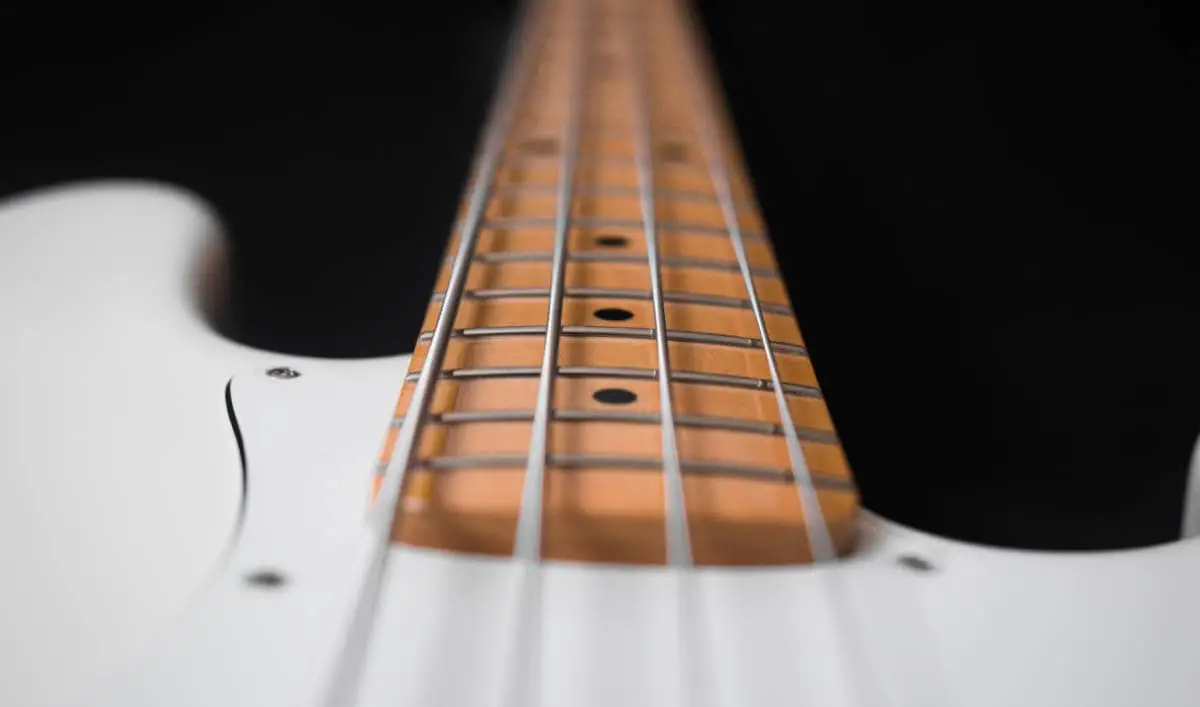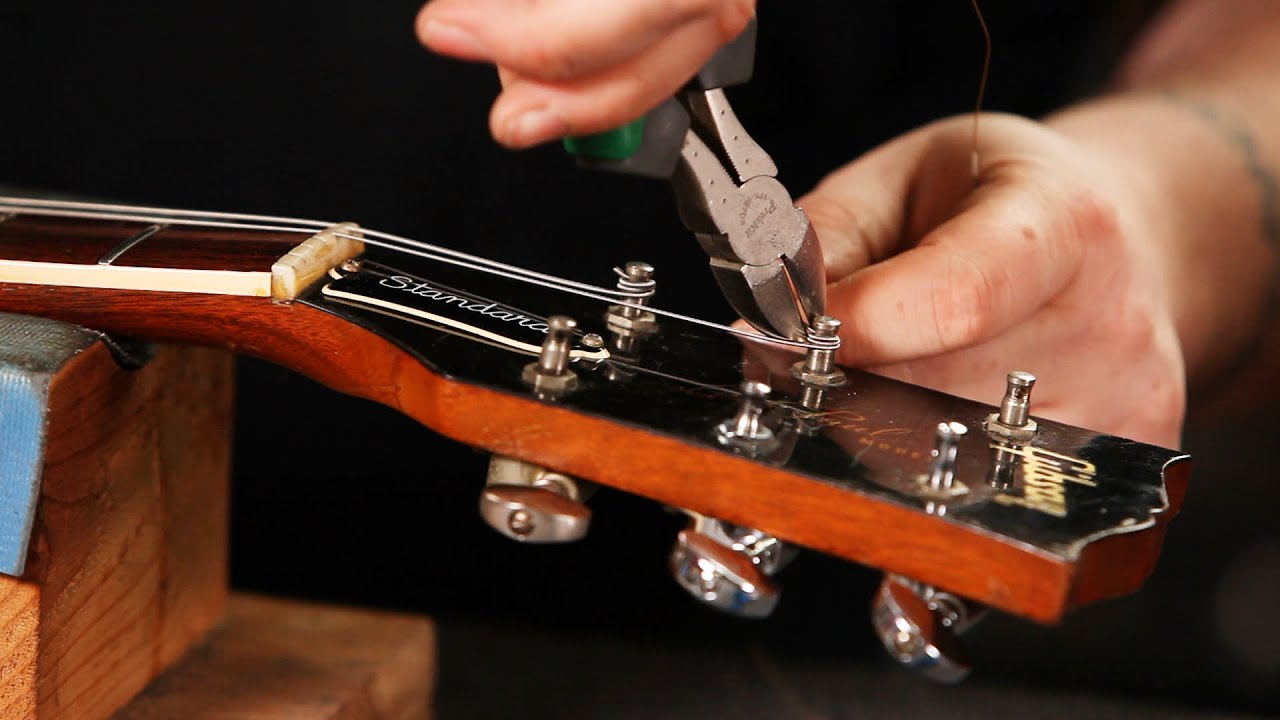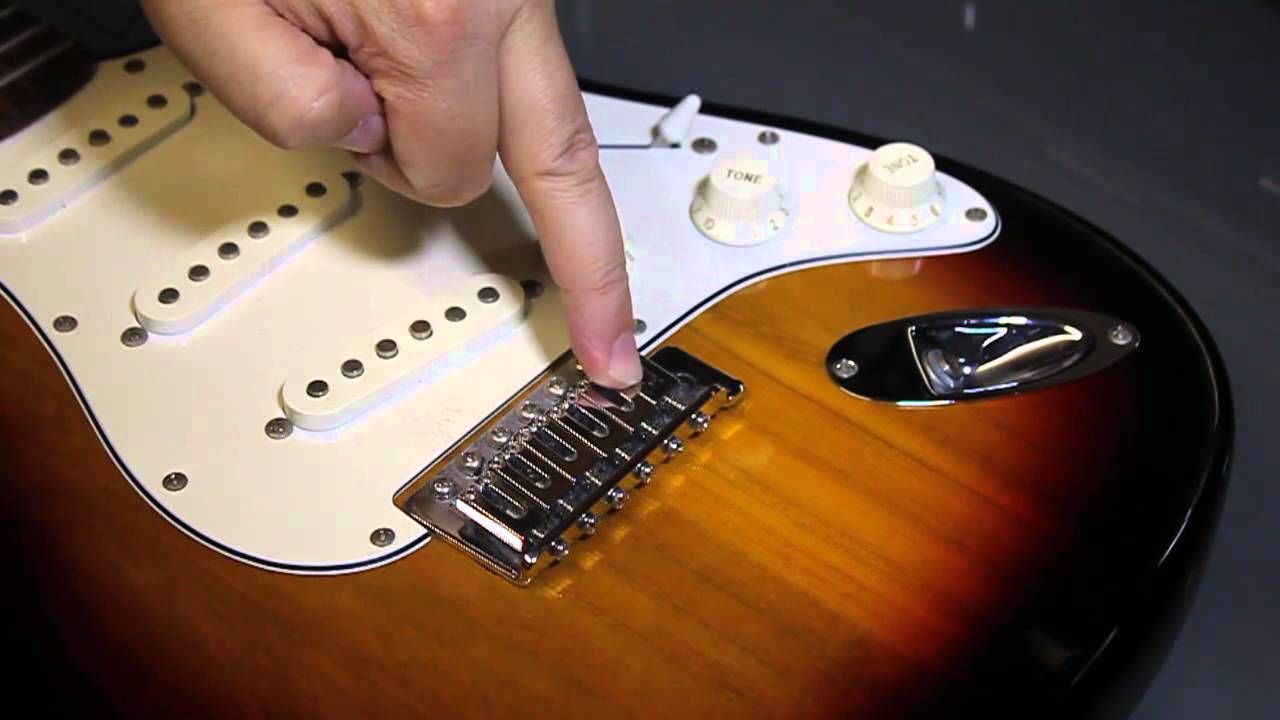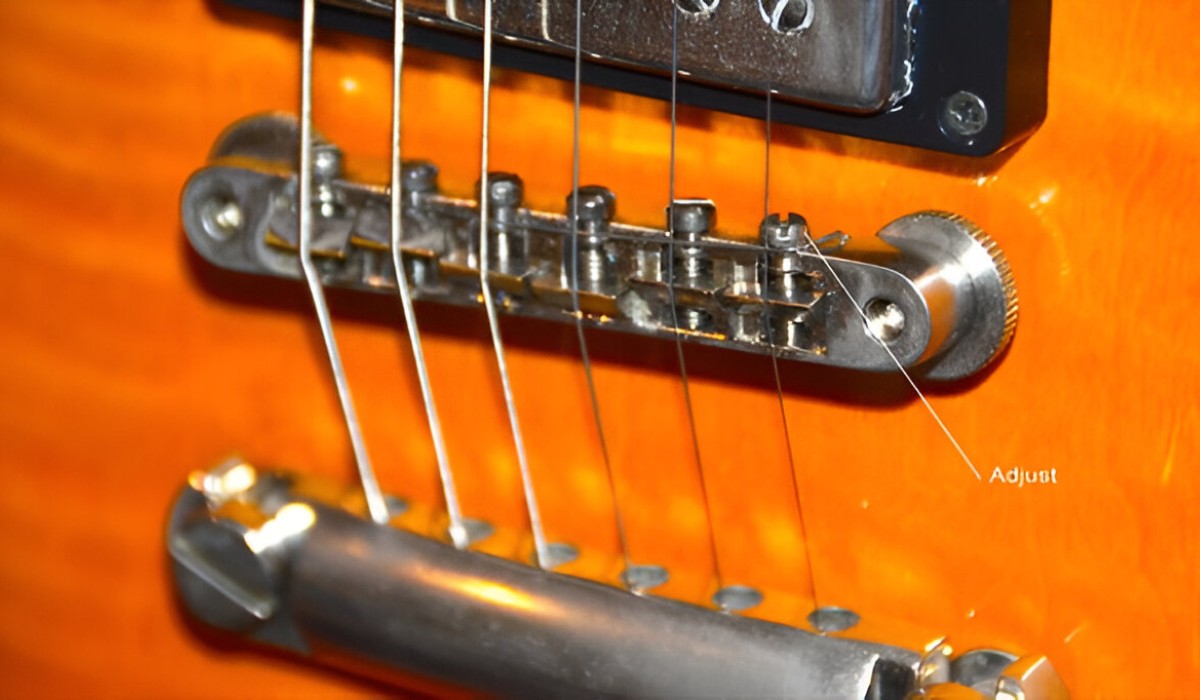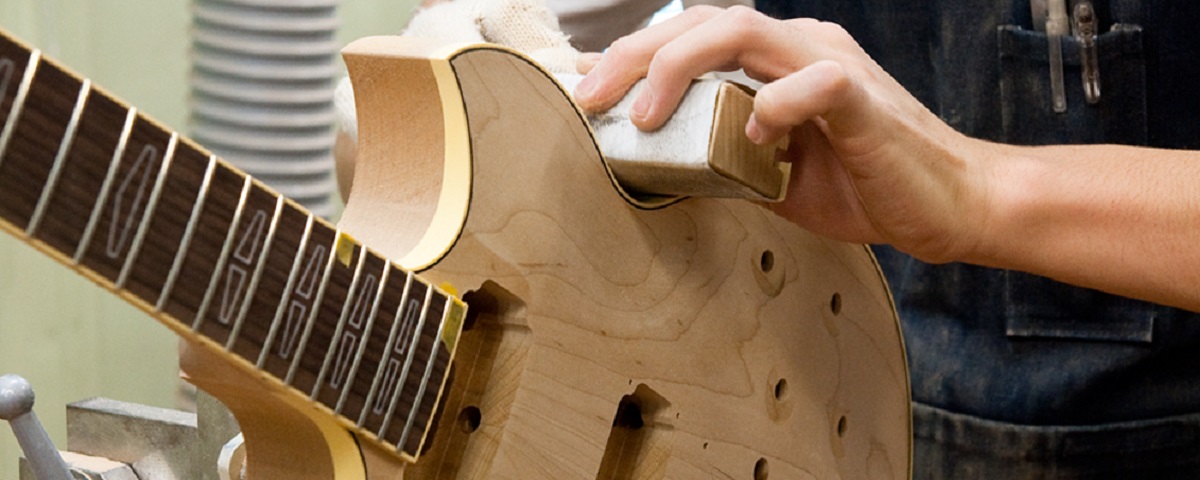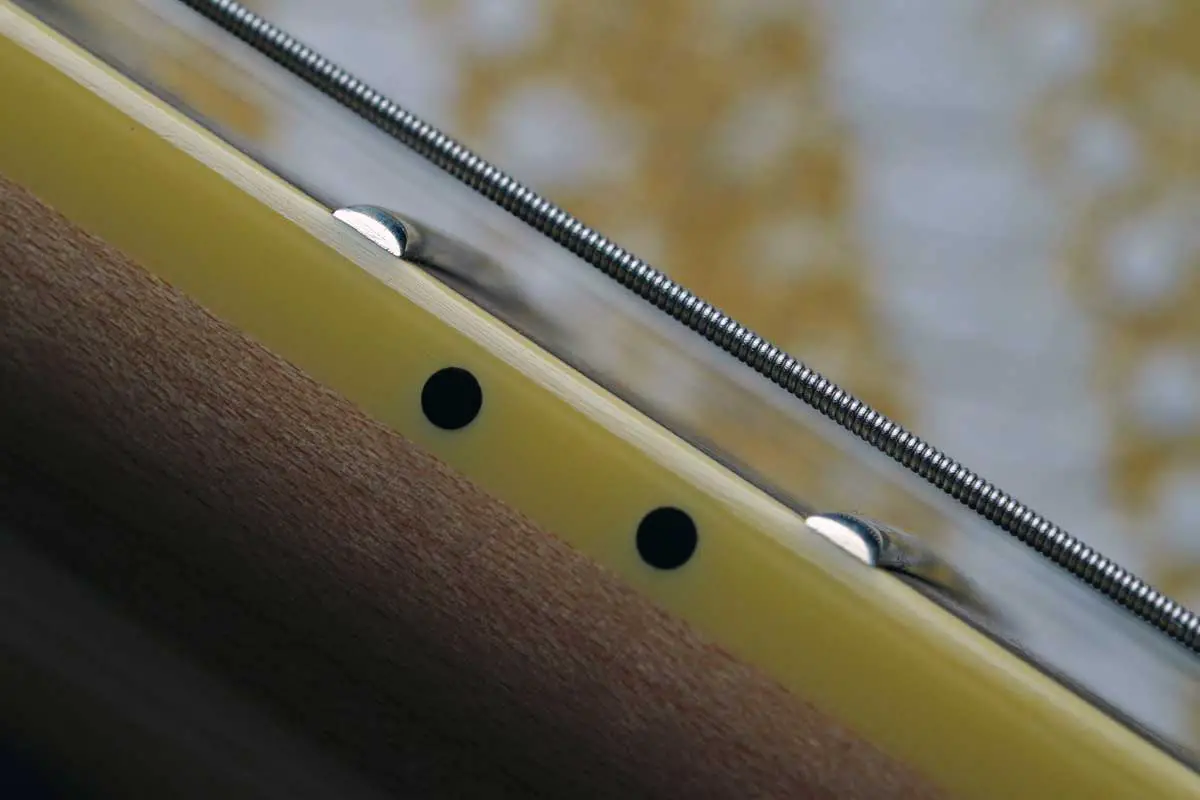Introduction
Are you an electric guitar enthusiast striving for that perfect playability and tone? One crucial factor that significantly influences your guitar's playability is the action. The action of an electric guitar refers to the distance between the strings and the frets. This seemingly minor detail can profoundly impact your playing experience, affecting everything from comfort and ease of playing to the overall sound quality.
Understanding the nuances of action and its impact on your instrument can empower you to make informed decisions about your guitar setup. Whether you're a seasoned guitarist or a novice player, delving into the realm of action adjustments can unlock a world of possibilities for refining your playing style and achieving your desired sound.
In this comprehensive guide, we'll explore the intricacies of action on electric guitars, shedding light on the factors that influence it, the benefits and drawbacks of low action, and practical tips for adjusting the action to suit your preferences. By the end of this journey, you'll be equipped with the knowledge and insights to optimize your electric guitar's action, enhancing your playing experience and musical expression.
What is Action on an Electric Guitar?
Action on an electric guitar refers to the distance between the strings and the fretboard. This measurement significantly influences playability, as it affects how easily the strings can be pressed down to the frets. A lower action means the strings are closer to the frets, requiring less effort to press them down and produce sound. Conversely, a higher action means the strings are farther from the frets, necessitating more force to fret the notes.
The action of an electric guitar is typically measured at the 12th fret, where the string is held down and the distance between the bottom of the string and the top of the fret is gauged. This measurement is crucial because it impacts several aspects of playing, including intonation, fretting ease, and overall comfort. Additionally, action affects the tone and sustain of the instrument, making it a vital consideration for achieving the desired sound.
While the action can be adjusted to suit individual preferences, finding the optimal balance is essential. Too low of an action can result in fret buzz, where the strings make unwanted contact with the frets, causing a buzzing sound. On the other hand, excessively high action can make playing physically taxing and lead to intonation issues.
Understanding the concept of action is fundamental for guitarists aiming to customize their instruments for optimal playability and tonal characteristics. With a clear grasp of this foundational aspect of guitar setup, players can embark on a journey of fine-tuning their instruments to match their unique playing styles and sonic aspirations.
Factors Affecting Action
Several factors come into play when determining the action of an electric guitar. Understanding these influences is crucial for achieving the desired playability and sound. Here are the primary factors affecting the action:
- Neck Relief: The curvature of the guitar neck, known as neck relief, plays a significant role in action. A neck with excessive relief may require higher action to prevent fret buzz, while a perfectly straight neck can accommodate lower action for easier playability.
- String Gauge: The thickness of the strings affects the tension and, consequently, the action. Heavier gauge strings typically require higher action to prevent buzzing, while lighter gauge strings allow for lower action due to their reduced tension.
- Bridge Height and Design: The bridge of the guitar, whether fixed or tremolo, and its height adjustment capabilities directly impact the action. Properly adjusting the bridge height is essential for achieving the desired string action.
- Nut Height: The nut, which supports the strings at the guitar’s headstock, also influences action. A poorly adjusted nut height can lead to high string action, affecting playability and intonation.
- Truss Rod Adjustment: The truss rod, located within the guitar’s neck, allows for adjustments to the neck’s curvature. Proper truss rod adjustments can optimize the neck relief, influencing the action across the fretboard.
- Playing Style: Individual playing styles and preferences can also impact the desired action. Players who employ aggressive strumming or bending techniques may prefer slightly higher action to accommodate their playing dynamics.
By considering these factors and their interplay, guitarists can make informed decisions when adjusting the action of their instruments. A holistic understanding of these influences empowers players to tailor their guitar setup to their specific playing needs and sonic aspirations.
Benefits of Low Action
Opting for low action on an electric guitar offers a myriad of advantages that can significantly enhance the playing experience and overall performance. Here are some key benefits of setting low action on your instrument:
- Enhanced Playability: Low action reduces the effort required to press down the strings, making it easier to fret notes and chords. This enhanced playability can be especially beneficial during extended playing sessions, minimizing hand fatigue and promoting a more fluid playing experience.
- Faster Fretting: With strings positioned closer to the frets, players can fret notes and execute intricate techniques more swiftly and accurately. This can be particularly advantageous for lead guitarists and those who incorporate intricate fingerstyle playing into their repertoire.
- Improved Bending and Vibrato: Lower action facilitates smoother and more controlled string bending and vibrato techniques. Players can achieve nuanced pitch modulations and expressive phrasing with greater ease, adding depth and emotion to their playing.
- Reduced String Fatigue: Lower action can contribute to reduced wear and fatigue on the strings, potentially extending their lifespan and maintaining consistent intonation and tone over time.
- Enhanced Intonation: Well-adjusted low action can promote improved intonation across the fretboard, ensuring that notes ring true and chords sound harmonious in all positions.
- Comfortable Chord Transitions: Lower action facilitates smoother transitions between chords, allowing for effortless fretting and chord changes, particularly beneficial for rhythm guitarists and strumming patterns.
By embracing low action, guitarists can unlock a world of possibilities, elevating their playing capabilities and musical expression. The enhanced playability and versatility afforded by low action can empower players to explore new techniques, expand their sonic palette, and ultimately elevate their musical performances.
Drawbacks of Low Action
While low action offers numerous advantages, it is essential to consider potential drawbacks that may arise from setting the action too low on an electric guitar. Understanding these limitations can help guitarists make informed decisions when adjusting their instrument’s action. Here are some notable drawbacks of low action:
- Fret Buzz: One of the most common issues associated with excessively low action is fret buzz, where the strings make unwanted contact with the frets, resulting in a buzzing sound. This can detract from the clarity and sustain of notes, particularly when playing with higher gain or amplification.
- String Rattle: Extremely low action can lead to string rattle against the frets, causing disruptive noise and compromising the overall sound quality. This can be especially pronounced when employing aggressive playing techniques or when using heavier gauge strings.
- Intonation Challenges: Setting the action too low may pose challenges in achieving optimal intonation across the fretboard. Notes may exhibit variations in pitch, particularly at higher frets, affecting the overall tuning stability and tonal accuracy.
- String Sustain: Excessively low action can impact string sustain, resulting in a quicker decay of notes and reduced resonance. This can limit the instrument’s ability to sustain notes for prolonged durations, affecting the overall sound and musical expression.
- Increased Risk of String Fretting Out: When the action is set too low, there is a heightened risk of the strings “fretting out,” meaning they make contact with the frets during bends or aggressive playing, leading to undesirable muted or choked-off notes.
- Setup Sensitivity: Maintaining extremely low action requires meticulous setup and regular maintenance. Changes in temperature, humidity, or string tension can have a more pronounced impact on the playability and stability of the instrument, necessitating frequent adjustments.
By acknowledging these potential drawbacks, guitarists can approach action adjustments with a balanced perspective, striving to find the optimal action that maximizes playability and tone while mitigating the inherent limitations of extremely low action settings.
How to Adjust Action on an Electric Guitar
Adjusting the action on an electric guitar is a precise process that involves fine-tuning various components to achieve the desired string height and playability. Here are the essential steps for adjusting the action on your electric guitar:
- Assess the Current Action: Before making any adjustments, evaluate the existing action of your guitar to determine if it aligns with your preferences. Play each string across the fretboard and take note of any buzzing or discomfort that may indicate the need for action adjustments.
- Truss Rod Adjustment: Start by ensuring the neck’s relief is appropriately set. Use a suitable truss rod wrench to make incremental adjustments to the truss rod, taking care not to over-tighten or loosen it excessively. The goal is to achieve a slight but even curvature in the neck, optimizing the action without causing fretting issues.
- Bridge Height Adjustment: Depending on your guitar’s bridge type, adjust the individual saddle height screws or the bridge height to fine-tune the string action. Use a ruler or feeler gauge to maintain consistent string height across the fretboard, ensuring that the action is uniform for all strings.
- Nut Height and Slotting: Evaluate the nut height and slotting to ensure that the strings sit comfortably and maintain the desired action at the headstock end of the fretboard. Make adjustments to the nut slots as necessary to achieve the desired string height and prevent binding or excessive clearance.
- String Gauge Consideration: If you’re considering a change in string gauge, be mindful of its impact on the action. Heavier gauge strings typically require slightly higher action to prevent buzzing, while lighter gauge strings may allow for a lower action without compromising playability.
- Intonation Adjustment: Once the action is set to your satisfaction, verify and adjust the intonation to ensure that the guitar maintains accurate pitch across the fretboard. Proper intonation contributes to consistent tuning and tonal accuracy, complementing the action adjustments.
Throughout the adjustment process, it’s crucial to make incremental changes and regularly reassess the guitar’s playability and tonal characteristics. Patience and meticulous attention to detail are key to achieving the optimal action for your electric guitar, tailored to your playing style and sonic preferences.
Conclusion
Understanding the intricacies of action on an electric guitar is paramount for guitarists seeking to optimize their instruments for superior playability and tone. The action, determined by the distance between the strings and the frets, profoundly influences various aspects of the playing experience, from fretting ease and comfort to overall sound quality.
By delving into the factors affecting action, such as neck relief, string gauge, bridge height, nut height, truss rod adjustments, and individual playing styles, guitarists can make informed decisions when fine-tuning their instrument’s action to suit their unique preferences and sonic aspirations.
While low action offers compelling benefits, including enhanced playability, faster fretting, improved bending and vibrato, and comfortable chord transitions, it’s essential to be mindful of potential drawbacks, such as fret buzz, string rattle, and intonation challenges. Striking a balance between low action and mitigating these limitations is crucial for achieving the optimal playability and tonal characteristics.
Adjusting the action on an electric guitar demands precision and patience, involving meticulous adjustments to the truss rod, bridge height, nut height, and intonation. By following a systematic approach and regularly assessing the playability and tonal nuances, guitarists can tailor their instrument to their exacting standards, unlocking new possibilities for musical expression and performance.
Ultimately, the quest for the perfect action on an electric guitar is a journey of discovery, experimentation, and fine-tuning, empowering guitarists to craft instruments that resonate with their individuality and elevate their musical endeavors.







